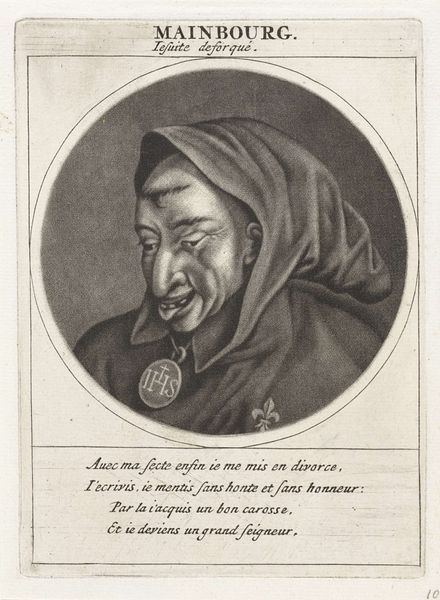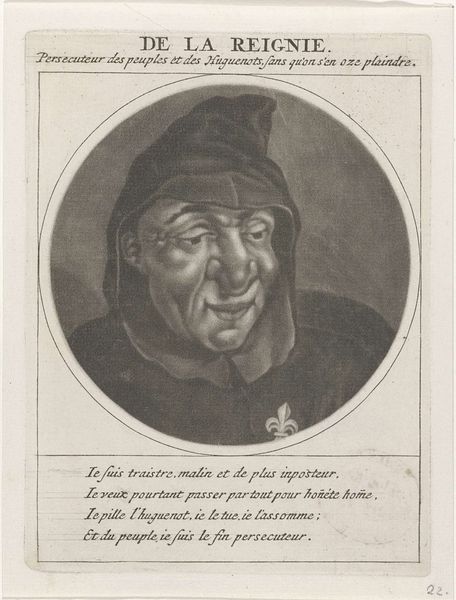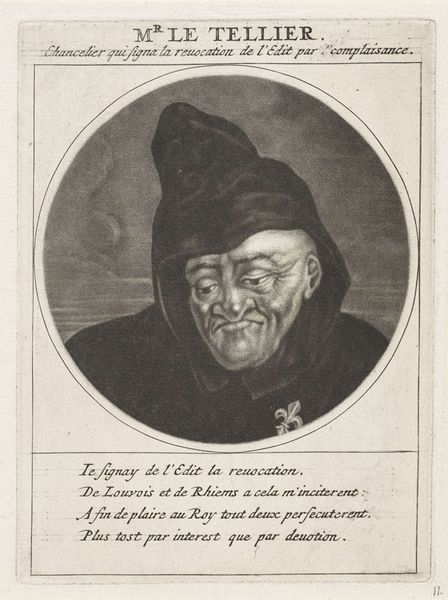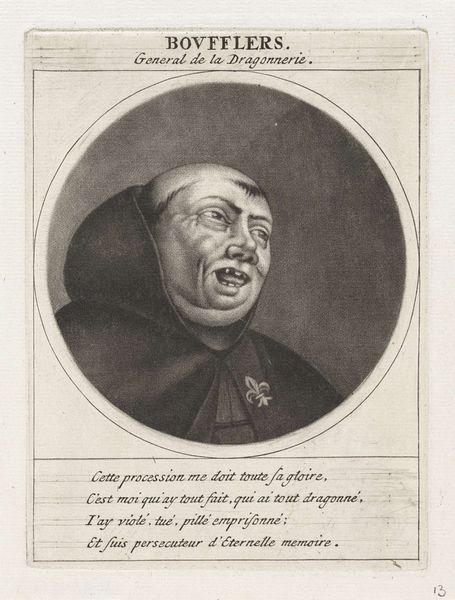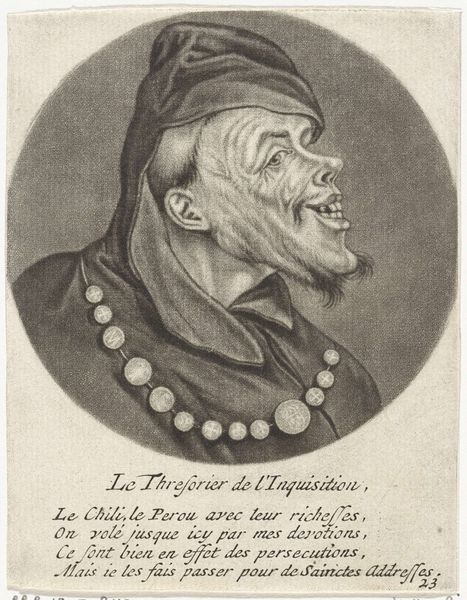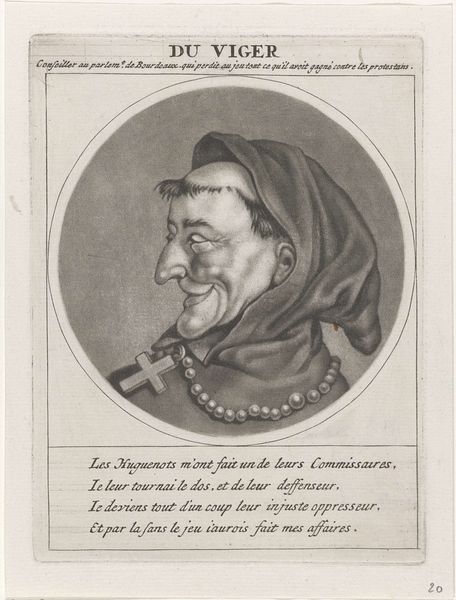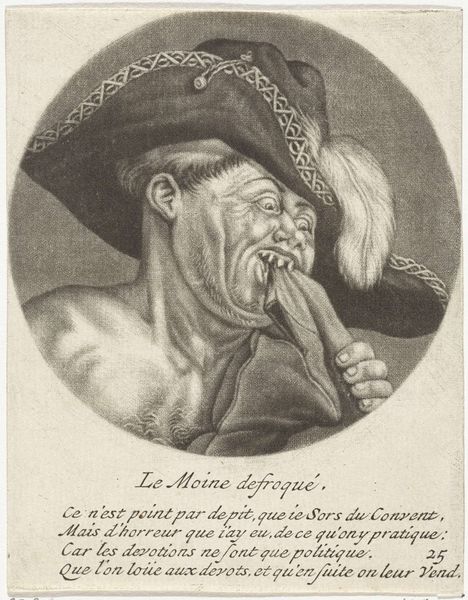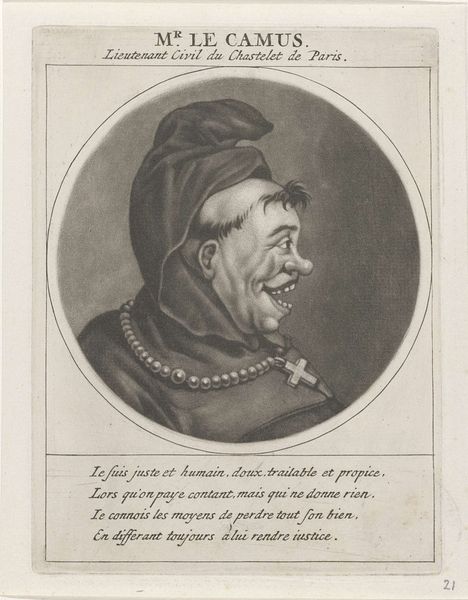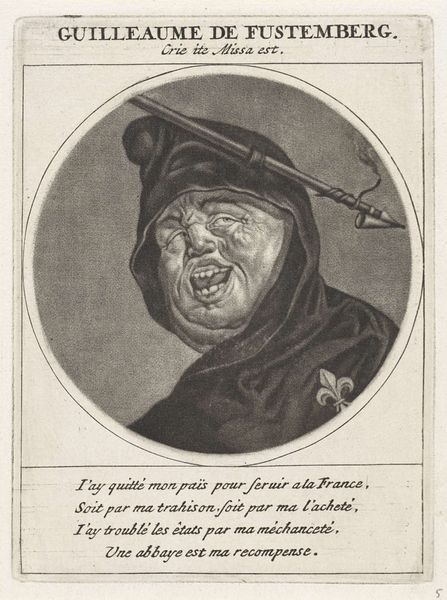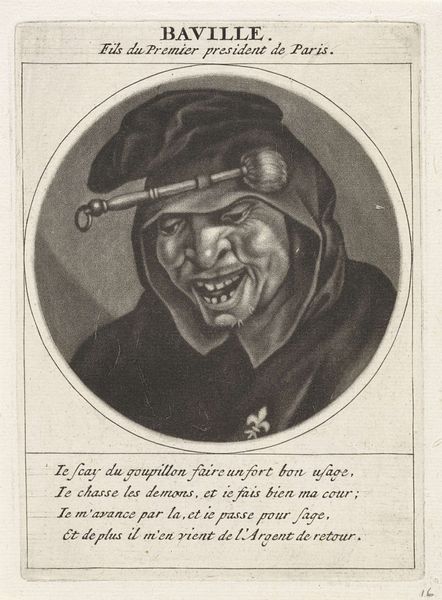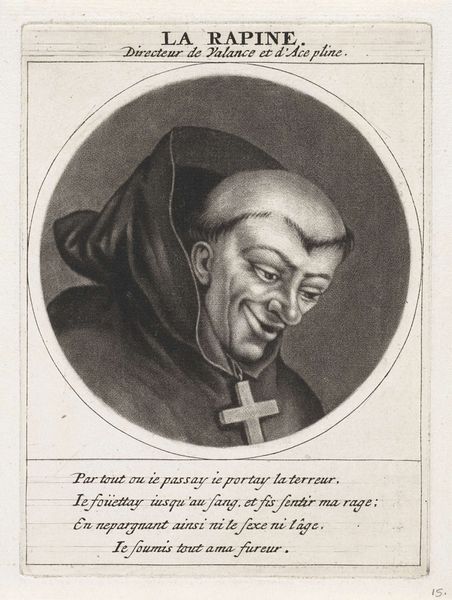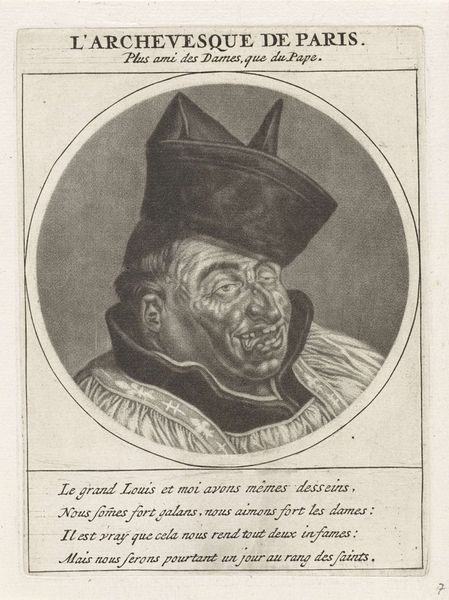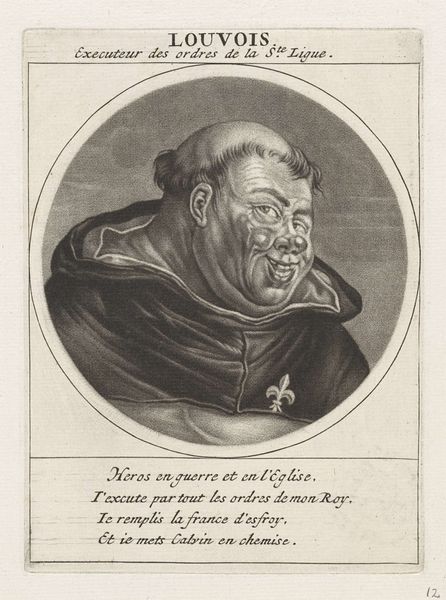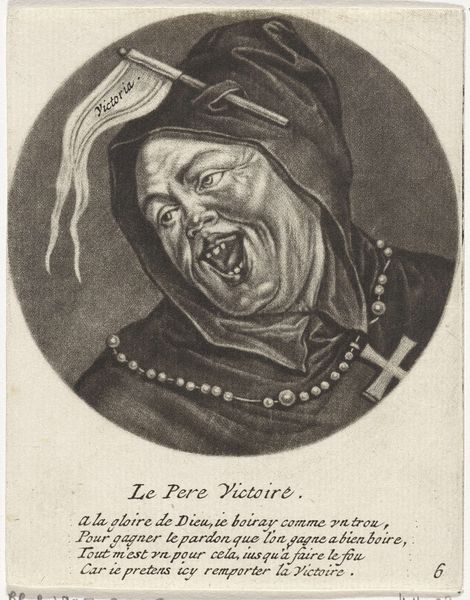
print, engraving
#
portrait
#
baroque
# print
#
caricature
#
old engraving style
#
figuration
#
line
#
engraving
Dimensions: height 146 mm, width 107 mm
Copyright: Rijks Museum: Open Domain
Editor: This is "Portret van Guillaume de La Brunetière," an engraving by Jacob Gole, created around 1691. It's… intense! The cross askew on his head and that knowing smirk, it feels like it's trying to say something biting about religious authority. What do you see in this piece? Curator: Oh, absolutely. The visual language screams satire. Think about the symbols used here: the Bishop's garb, the misplaced crucifix – a potent symbol subverted! It's like Gole is tapping into a collective unease about power and piety. The caricature plays on that tension, doesn't it? Editor: It does. The face is so exaggerated, it’s almost grotesque. Was that a common visual strategy at the time? Curator: Indeed. Caricature offered artists a way to critique social figures and institutions, like the Church, using humour to bypass censorship. Look at the lines of the engraving, the deliberate distortions… it all adds up to a dismantling of respect. The figure, along with the printed text below the portrait which begins with the words "If I carry the cross with passion..." is basically admitting hypocrisy and putting profit above devotion. Editor: So the subverted religious imagery and biting visual language become a form of protest? Curator: Precisely! The artist uses symbols not just to depict, but to actively *undermine* the authority that they represent. By mocking conventional symbols and twisting their meanings, it challenges viewers to question what those figures represent, both then and perhaps even now. Editor: It's incredible how much meaning can be packed into such a small image. I will never see religious symbology the same way. Curator: And I hope, appreciate the visual shorthand through the distortion of this one!
Comments
No comments
Be the first to comment and join the conversation on the ultimate creative platform.
